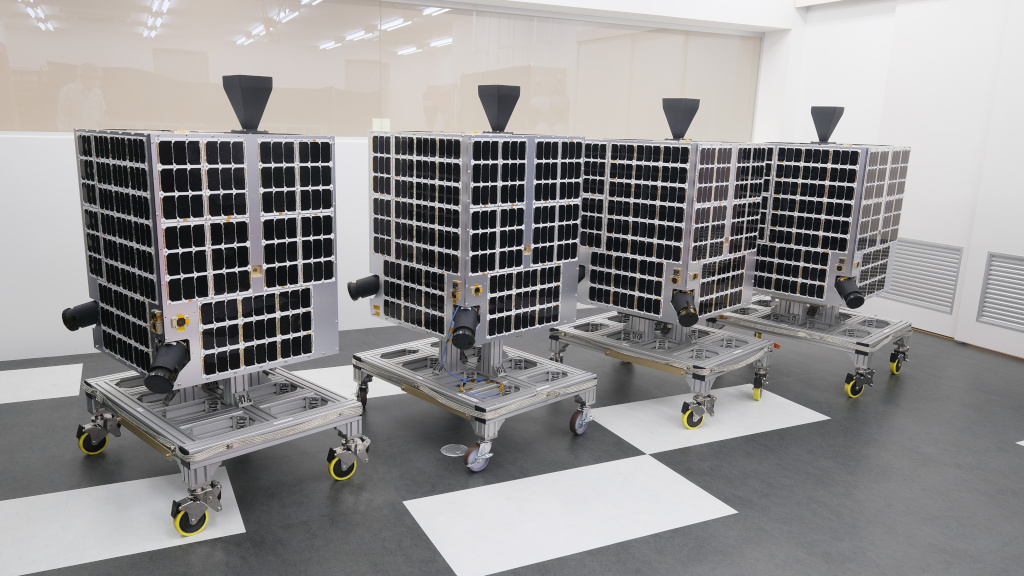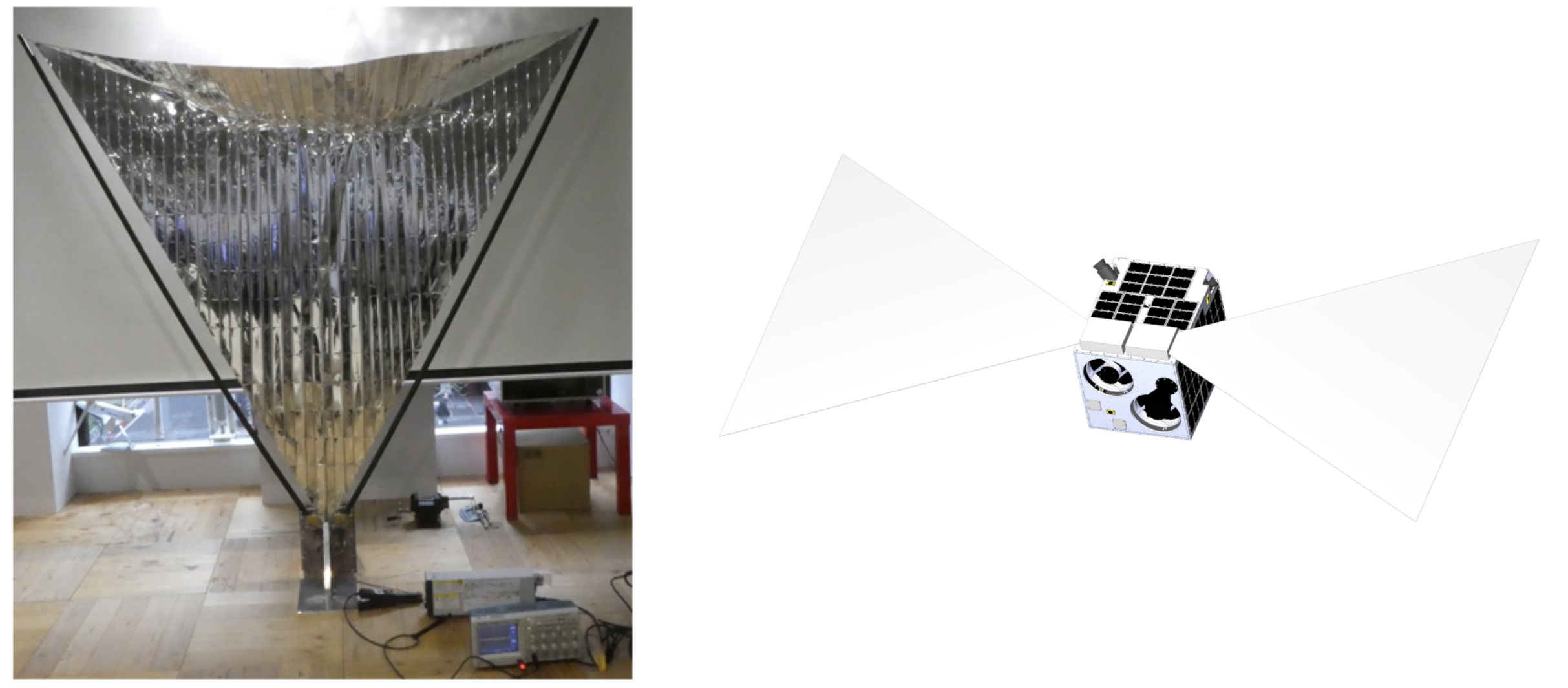Aiming to lower the cost and shorten the delivery time of satellites by the development of innovative components
TOKYO, October 12, 2020 – Founded in 2008, Axelspace Corporation has been nurturing a strong track record by designing, building, and operating 5 microsatellites. From 2015, the company started building up AxelGlobe, the next-generation Earth observation platform, consisting of multiple microsatellites to cover various parts of the world with high frequency, and launched the first GRUS-1A in December 2018. For the upcoming launch, the manufacturing process for 4 satellites (GRUS-1B, 1C, 1D, 1E) is almost complete and the final preparation for the shipment is being conducted as the company waits for the confirmation of the actual launch date.

Figure 1: Four satellites (GRUS-1B, 1C, 1D, 1E) in final preparation stage for the shipment
Lowering satellite manufacturing cost and shortening delivery time are becoming critical topics in order to move forward with the mass production of satellites. Innovation in the manufacturing process of on-board components for satellites is vital, to welcome the future of mass production and move away from single production. Axelspace decided to newly develop 2 different on-board components, listed below, together with partner companies. These developments have been selected and awarded a grant, FY2020 “Program to Support Ventures for Developing Space Components” by the New Energy and Industrial Technology Development Organization (NEDO).
Development Component 1: Membrane Deployment Deorbit Mechanism
Space debris is a growing concern and proper disposal of newly launched satellites, after the end of operation, by deorbiting is fast becoming a requirement. Satellites for Low Earth Orbit, developed by Axelspace, will re-enter the atmosphere and disintegrate, before reaching the ground. The company has been developing the membrane deployment deorbit mechanism to accelerate the speed of lowering the orbital altitude and as announced on June 9th this year, the project has been selected by the Japan Aerospace Exploration Agency (“JAXA”) for the demonstration theme of “Innovative Satellite Technology Demonstration-3.” The component will be developed in partnership with Sakase Adtech Co., Ltd.

Figure 2: Deorbit Mechanism (Left : Prototype, Right : Deployment image in orbit)
Development Component 2: Reaction Wheel
Reaction wheel is one of the attitude control systems and a crucial component for a satellite like GRUS with demanding requirements for precision attitude control. Diversification of suppliers of reaction wheel for microsatellites has been needed, as there are challenges with the cost and delivery time, in addition to the short supply as the vendors are limited. The component will be developed in partnership with Shinano Kenshi Co., Ltd.

Figure 3: Prototype of the reaction wheel